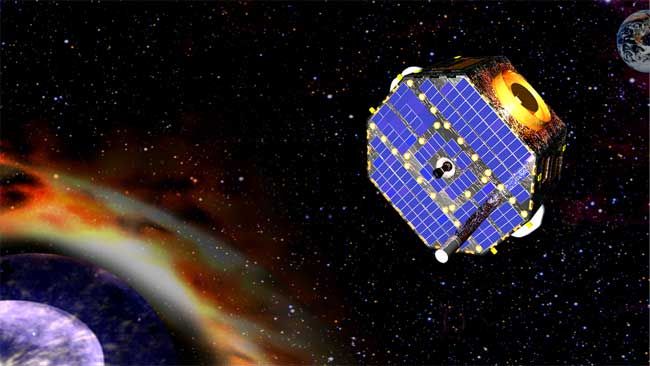NASA to Discuss Discoveries of Material from Beyond Solar System on Tuesday

Scientists will announce new findings about material from beyond the solar system at a NASA press conference next Tuesday (Jan. 31).
The researchers will also discuss discoveries about the boundary region that separates our solar system from interstellar space and protects us from fast-moving particles called galactic cosmic rays, researchers said.
The results were obtained after analyzing data gathered by NASA's Interstellar Boundary Explorer (IBEX) spacecraft, which is studying the edge of the solar system from an orbit about 200,000 miles (322,000 kilometers) above Earth.
The briefing will take place at 1 p.m. EST (1800 GMT) Tuesday at NASA headquarters in Washington, D.C. The participants are:
- David McComas, IBEX principal investigator and assistant vice president of the Space Science and Engineering Division at Southwest Research Institute in San Antonio
- Priscilla Frisch, senior scientist at the University of Chicago
- Eberhard Möbius, professor at the University of New Hampshire and currently visiting professor at Los Alamos National Laboratory in New Mexico
- Seth Redfield, assistant professor at Wesleyan University in Middletown, Conn.
NASA launched the coffee-table-sized IBEX probe in October 2008 to map out the boundary between the solar system and interstellar space. The $169 million spacecraft was built for an initial two-year mission.
So far, IBEX has made some surprising discoveries. In 2009, for example, the spacecraft detected a mysterious ribbon on the edge of the solar system that scientists now think is a reflection of the solar wind — the million-miles-per-hour stream of charged particles from the sun.
And in 2010, researchers announced that IBEX had gotten the first-ever look at the solar wind crashing headlong into Earth's magnetosphere.
Sign up for the Live Science daily newsletter now
Get the world’s most fascinating discoveries delivered straight to your inbox.
This article was provided by SPACE.com, a sister site to LiveScience. Follow SPACE.com for the latest in space science and exploration news on Twitter @Spacedotcom and on Facebook.












